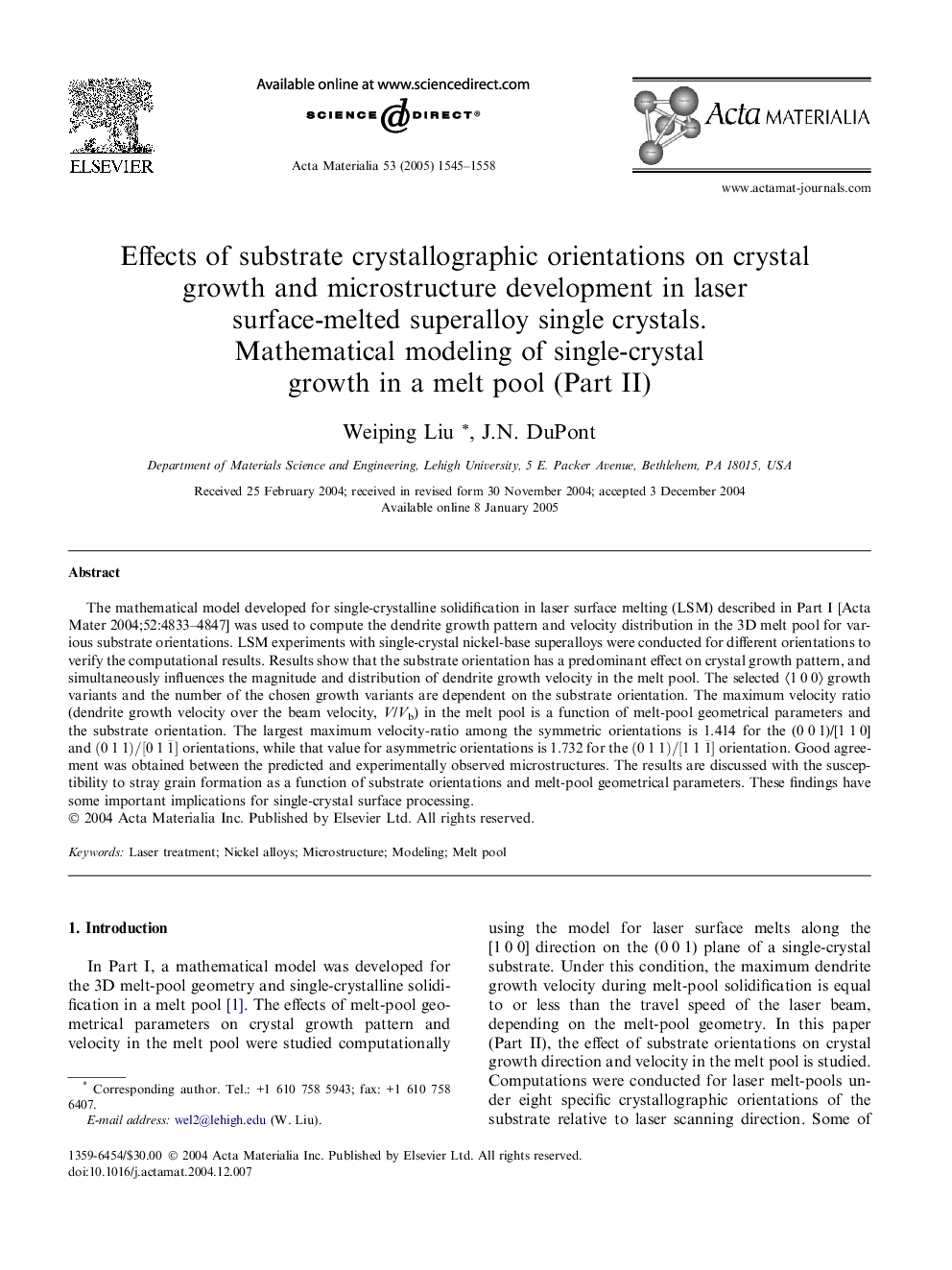| Article ID | Journal | Published Year | Pages | File Type |
|---|---|---|---|---|
| 10621073 | Acta Materialia | 2005 | 14 Pages |
Abstract
The mathematical model developed for single-crystalline solidification in laser surface melting (LSM) described in Part I [Acta Mater 2004;52:4833-4847] was used to compute the dendrite growth pattern and velocity distribution in the 3D melt pool for various substrate orientations. LSM experiments with single-crystal nickel-base superalloys were conducted for different orientations to verify the computational results. Results show that the substrate orientation has a predominant effect on crystal growth pattern, and simultaneously influences the magnitude and distribution of dendrite growth velocity in the melt pool. The selected ã1 0 0ã growth variants and the number of the chosen growth variants are dependent on the substrate orientation. The maximum velocity ratio (dendrite growth velocity over the beam velocity, V/Vb) in the melt pool is a function of melt-pool geometrical parameters and the substrate orientation. The largest maximum velocity-ratio among the symmetric orientations is 1.414 for the (0 0 1)/[1 1 0] and (011)/[011¯] orientations, while that value for asymmetric orientations is 1.732 for the (011)/[111¯] orientation. Good agreement was obtained between the predicted and experimentally observed microstructures. The results are discussed with the susceptibility to stray grain formation as a function of substrate orientations and melt-pool geometrical parameters. These findings have some important implications for single-crystal surface processing.
Related Topics
Physical Sciences and Engineering
Materials Science
Ceramics and Composites
Authors
Weiping Liu, J.N. DuPont,
